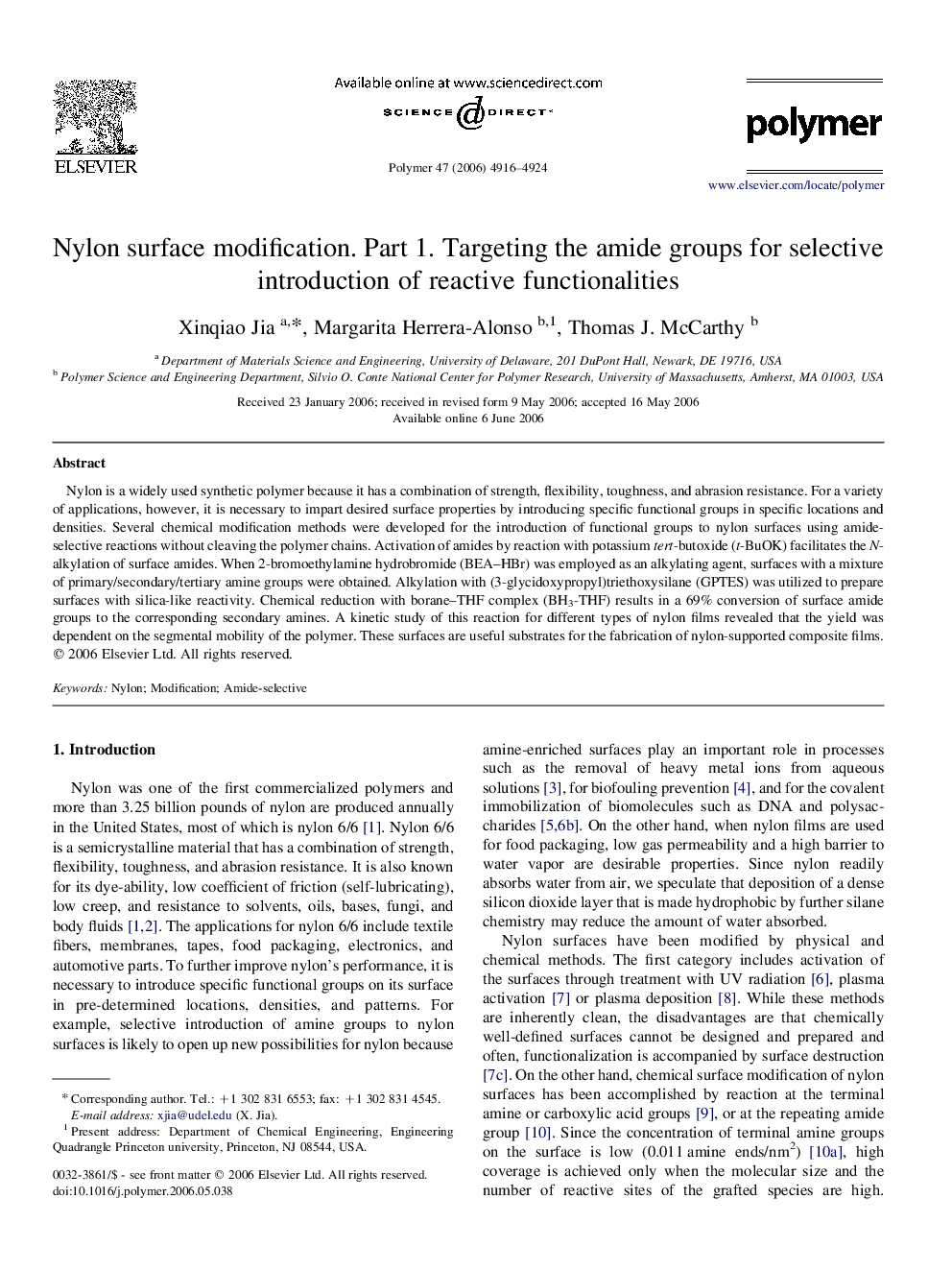| کد مقاله | کد نشریه | سال انتشار | مقاله انگلیسی | نسخه تمام متن |
|---|---|---|---|---|
| 5189357 | 1381183 | 2006 | 9 صفحه PDF | دانلود رایگان |
عنوان انگلیسی مقاله ISI
Nylon surface modification. Part 1. Targeting the amide groups for selective introduction of reactive functionalities
دانلود مقاله + سفارش ترجمه
دانلود مقاله ISI انگلیسی
رایگان برای ایرانیان
کلمات کلیدی
موضوعات مرتبط
مهندسی و علوم پایه
شیمی
شیمی آلی
پیش نمایش صفحه اول مقاله

چکیده انگلیسی
Nylon is a widely used synthetic polymer because it has a combination of strength, flexibility, toughness, and abrasion resistance. For a variety of applications, however, it is necessary to impart desired surface properties by introducing specific functional groups in specific locations and densities. Several chemical modification methods were developed for the introduction of functional groups to nylon surfaces using amide-selective reactions without cleaving the polymer chains. Activation of amides by reaction with potassium tert-butoxide (t-BuOK) facilitates the N-alkylation of surface amides. When 2-bromoethylamine hydrobromide (BEA-HBr) was employed as an alkylating agent, surfaces with a mixture of primary/secondary/tertiary amine groups were obtained. Alkylation with (3-glycidoxypropyl)triethoxysilane (GPTES) was utilized to prepare surfaces with silica-like reactivity. Chemical reduction with borane-THF complex (BH3-THF) results in a 69% conversion of surface amide groups to the corresponding secondary amines. A kinetic study of this reaction for different types of nylon films revealed that the yield was dependent on the segmental mobility of the polymer. These surfaces are useful substrates for the fabrication of nylon-supported composite films.
ناشر
Database: Elsevier - ScienceDirect (ساینس دایرکت)
Journal: Polymer - Volume 47, Issue 14, 28 June 2006, Pages 4916-4924
Journal: Polymer - Volume 47, Issue 14, 28 June 2006, Pages 4916-4924
نویسندگان
Xinqiao Jia, Margarita Herrera-Alonso, Thomas J. McCarthy,